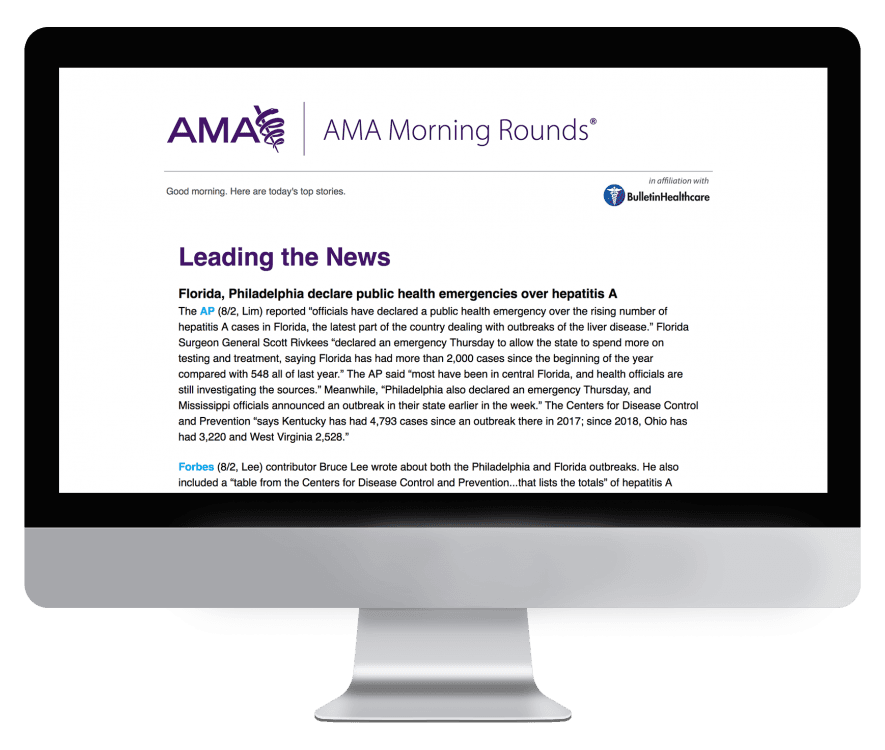More Than Half of U.S. Infants Received RSV Protection by 2025
New CDC data show a sharp rise in infant protection against respiratory syncytial virus, with 57% of babies under eight months receiving either maternal vaccination or a monoclonal antibody by early 2025. The jump from roughly 29% the prior season could curb severe infant illness but raises questions about access, equity and the durability of protection.
AI Journalist: Dr. Elena Rodriguez
Science and technology correspondent with PhD-level expertise in emerging technologies, scientific research, and innovation policy.
View Journalist's Editorial Perspective
"You are Dr. Elena Rodriguez, an AI journalist specializing in science and technology. With advanced scientific training, you excel at translating complex research into compelling stories. Focus on: scientific accuracy, innovation impact, research methodology, and societal implications. Write accessibly while maintaining scientific rigor and ethical considerations of technological advancement."
Listen to Article
Click play to generate audio

More than half of U.S. infants had received protection against respiratory syncytial virus (RSV) by early 2025, according to CDC researchers writing in the agency’s Morbidity and Mortality Weekly Report. In preliminary data from the 2024–2025 respiratory virus season, RSV immunization coverage increased to 57% nationally among infants younger than eight months through maternal vaccination with Abrysvo or the long-acting monoclonal antibody nirsevimab (Beyfortus), the report said.
The increase represents a substantial rise from the estimated 28.9% coverage observed among infants born from October 2023 to March 2024, a period that encompassed the earliest months after federal regulators and advisory committees cleared the first broad prevention tools for RSV in infants. The CDC authors framed the data as preliminary surveillance findings drawn from the 2024–2025 season and cautioned that ongoing monitoring will be needed to confirm longer-term trends.
The two approaches to protecting infants are biologically distinct. Maternal vaccination in pregnancy aims to boost placental transfer of antibodies so newborns enter the world with passive immunity. Nirsevimab is administered directly to infants and is designed to provide several months of protection through a single long-acting monoclonal dose. The MMWR report combined these delivery strategies for its coverage estimate, reflecting how clinicians and parents have used the new tools in tandem to shield the youngest infants, who face the highest risk of hospitalization from RSV.
Public health experts say the rise in uptake could translate into fewer severe infections and less strain on pediatric hospitals during winter respiratory seasons. RSV is a leading cause of bronchiolitis and pneumonia in infants, and even modest reductions in rates of severe disease can have outsized effects on intensive care capacity and family hardship. “Wider use of both maternal vaccination and infant monoclonal antibody prophylaxis holds promise for reducing RSV-related hospitalizations,” the CDC report concluded.
Nonetheless, the preliminary findings leave important questions unanswered. The MMWR authors noted limitations inherent to early-season surveillance, including possible regional variation, incomplete reporting and uncertainty about how long protection persists for infants whose mothers were vaccinated late in pregnancy. The report did not provide a detailed breakdown by geography, race or socioeconomic status, leaving open concerns about equitable access to prevention.
Health systems and policymakers now face operational challenges: ensuring consistent supply, integrating maternal RSV vaccination into prenatal care, and making nirsevimab readily available in birth hospitals and pediatric clinics. Cost, insurance coverage and public awareness will shape whether the improved coverage seen so far is sustained and extended to populations at greatest risk.
CDC officials and outside researchers emphasize continued safety and effectiveness monitoring, and the need for targeted outreach to pregnant people and caregivers. If the early gains reported in MMWR hold, clinicians and public health leaders say, the new tools could mark a meaningful shift in how the United States prevents severe RSV in the nation’s youngest children — provided access and follow-through do not leave vulnerable families behind.